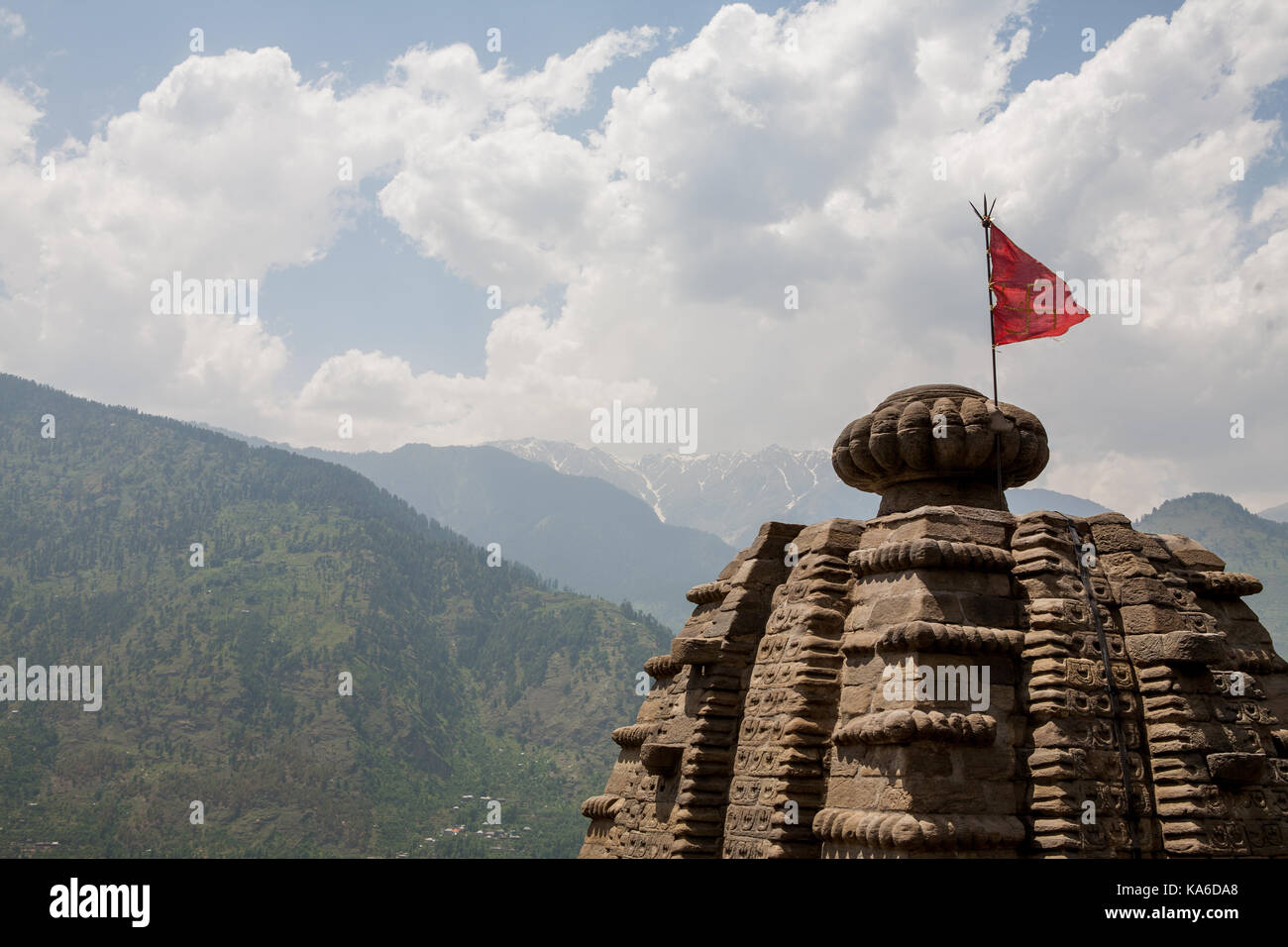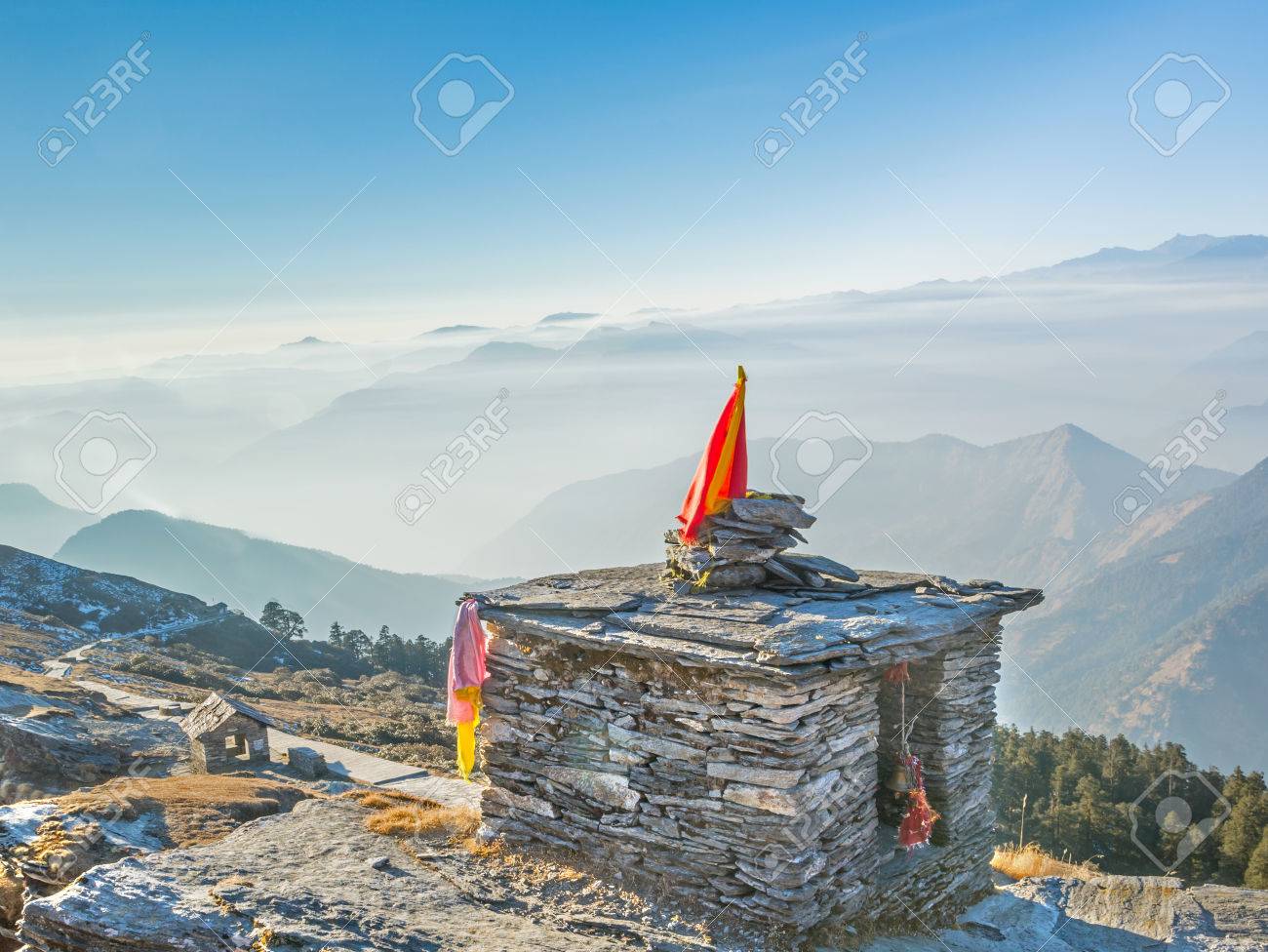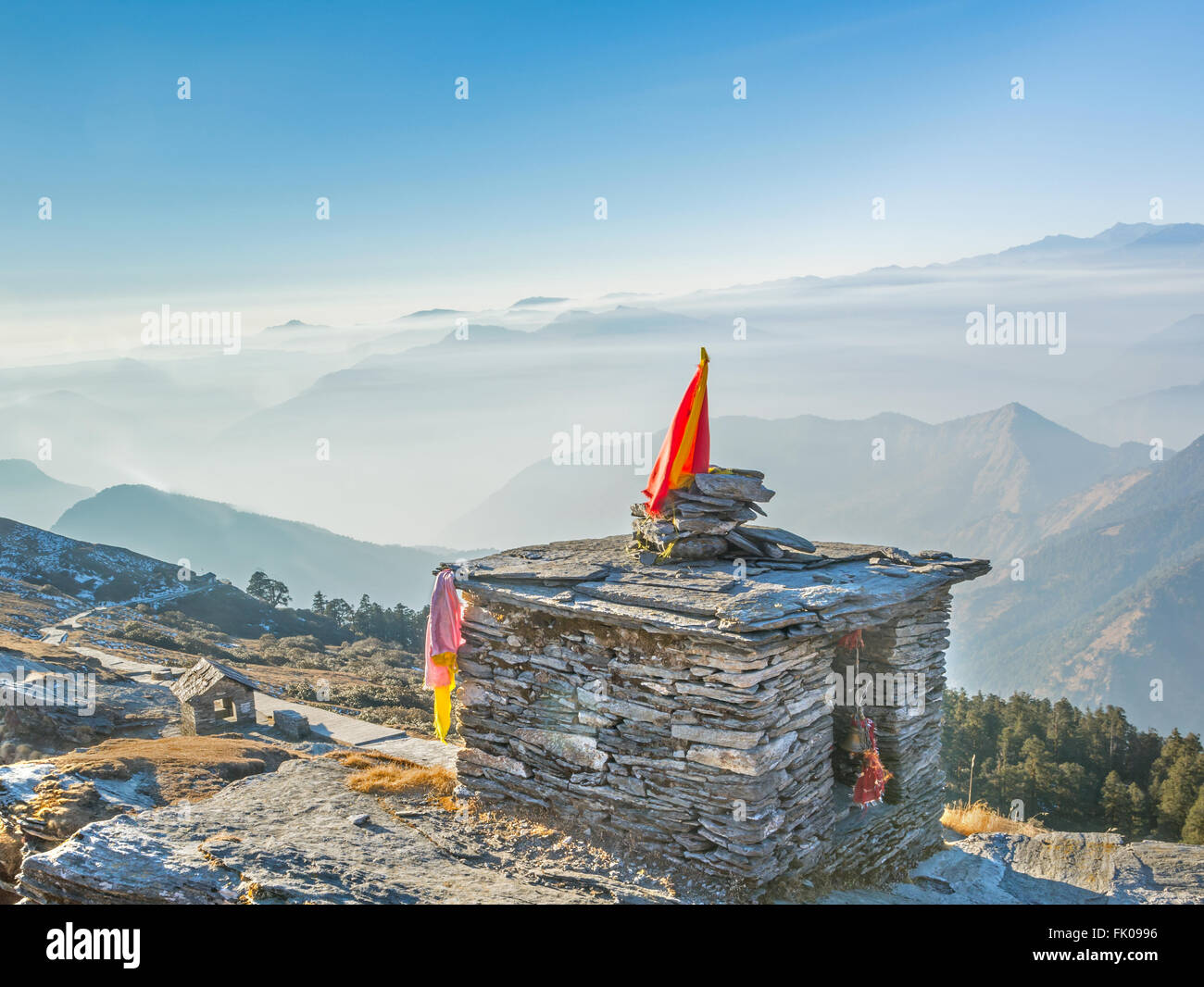The Himalayas are home to some of the world’s most beautiful temples. These sacred sites offer breathtaking views and rich spiritual experiences.
Nestled among the towering peaks, Himalayan temples hold a special allure for travelers and pilgrims alike. With their ancient architecture, serene surroundings, and deep-rooted history, these temples provide a unique glimpse into the region’s spiritual heritage. From the snow-capped heights of Uttarakhand to the lush valleys of Himachal Pradesh, each temple tells a story of devotion and faith.
Whether you’re seeking peace, adventure, or a connection to the divine, exploring these temples will leave you in awe. Join us as we journey through the top temples in the Himalayas, uncovering their magic and mystery.

Credit: www.alamy.com
Ancient Temples
The Himalayas are home to some of the most ancient temples in the world. These temples attract pilgrims and tourists alike. Their historic significance and architectural beauty are unmatched. Let’s explore these ancient wonders.
Historic Significance
Many Himalayan temples are centuries old. They reflect the deep-rooted spiritual traditions of the region. These temples have seen countless generations. They have witnessed historical events and changes over time.
Some temples are believed to be built by gods themselves. Legends and myths surround their origins. These stories add to the mystical aura of the temples. They connect people to the divine and the past.
Architectural Marvels
Himalayan temples showcase stunning architecture. They are built with intricate designs and carvings. The craftsmanship is exceptional. Each temple has unique features that captivate visitors.
Stone, wood, and metal are commonly used materials. The temples blend harmoniously with the natural landscape. Their beauty lies in simplicity and detail. They stand as testaments to ancient engineering skills.
Some temples have towering spires. Others feature detailed frescoes and sculptures. These elements reflect the artistic heritage of the region. Visiting these temples is a visual and spiritual treat.

Credit: www.123rf.com
Sacred Sites
Explore the top temples in the Himalayas, where spirituality meets breathtaking landscapes. Visit Kedarnath, Badrinath, and Hemkund Sahib for a serene experience.
### Sacred Sites The Himalayas are home to some of the most remarkable temples in the world. These sacred sites offer a unique blend of spirituality, history, and natural beauty that can be deeply moving. Whether you are a devout pilgrim or a curious traveler, the temples in the Himalayas provide a rich tapestry of experiences that can touch your soul. Let’s delve into the spiritual atmosphere and the importance of pilgrimage at these holy sites.Spiritual Atmosphere
Walking into a Himalayan temple is like stepping into another realm. The serene environment, combined with the pure mountain air, creates an atmosphere that feels almost otherworldly. Imagine the gentle hum of morning prayers, the scent of incense wafting through the air, and the sight of ancient architecture blending seamlessly with snow-capped peaks. In my visit to the Kedarnath Temple, I felt an overwhelming sense of peace the moment I arrived. The temple, dedicated to Lord Shiva, is surrounded by majestic mountains and offers a serene atmosphere that encourages introspection and inner peace. It’s a feeling that words can hardly capture but is profoundly felt.Pilgrimage Importance
Why do people undertake challenging journeys to these remote temples? The act of pilgrimage in the Himalayas is not just about reaching a destination; it’s a transformative journey that many believe cleanses the soul. Consider the journey to the Hemkund Sahib, a Sikh temple nestled at 4,633 meters. The trek is arduous, but every step feels like a prayer. Pilgrims often describe a feeling of spiritual rebirth upon reaching the temple, as if the physical challenge helps them shed the burdens of everyday life. Have you ever wondered why physical hardship is part of so many religious journeys? It’s believed that overcoming these challenges makes the spiritual experience more profound. When you finally reach the temple, the sense of accomplishment enhances the spiritual connection. So, if you’re looking for an experience that combines physical challenge with spiritual reward, these sacred sites in the Himalayas offer something truly special. What temple will you visit next on your spiritual journey?Remote Locations
The Himalayas house some of the most remarkable temples in the world. These sacred sites are often found in remote locations, making them a unique experience. Nestled in the mountains, these temples offer serenity and spiritual solace. The journey to these hidden gems can be both challenging and rewarding.
Hidden Gems
Many temples in the Himalayas remain hidden from the usual tourist trails. These spots hold centuries of history and spirituality. For example, the Tungnath Temple, one of the highest Shiva temples, is a true hidden gem. It offers breathtaking views and a tranquil atmosphere.
Another gem is the Rudranath Temple. It is located amidst dense forests and alpine meadows. This temple is part of the Panch Kedar pilgrimage, adding to its spiritual significance. The journey to these temples often requires trekking through scenic landscapes. It enhances the spiritual experience.
Accessibility Challenges
Reaching these remote temples poses significant challenges. The rugged terrain and high altitudes can be demanding. It requires physical fitness and mental preparation. Many of these temples are accessible only by foot. The paths can be steep and narrow.
Weather conditions also play a crucial role. Sudden changes can make the journey difficult. Snow, rain, and landslides can obstruct the paths. Proper planning and local guidance are essential. Despite these challenges, the beauty and serenity of these temples make the effort worthwhile.
Cultural Insights
Exploring the temples in the Himalayas offers more than just a spiritual journey. It’s a deep dive into the local culture and traditions. Each temple tells a story, revealing the rich heritage of the region. Let’s delve into the cultural insights that make these temples unique.
Local Traditions
Local traditions around Himalayan temples are fascinating. Villagers often visit these temples daily. They offer prayers and seek blessings for their families. These visits are an integral part of their routine. Another common tradition is the offering of flowers and food. This symbolizes gratitude and respect for the deities. Temple bells ringing throughout the day create a serene atmosphere.
Festivals And Rituals
Festivals and rituals bring Himalayan temples to life. Each temple has its own set of celebrations. During these festivals, the temples are decorated beautifully. Colorful lights, flowers, and traditional music fill the air. These festivals attract devotees from nearby villages. Rituals often include special prayers, dances, and feasts. These celebrations strengthen community bonds and keep traditions alive.
Natural Beauty
The Himalayas are home to some of the most beautiful temples in the world. These temples are not just places of worship. They are surrounded by incredible natural beauty. Visitors experience breathtaking views and unique wildlife encounters. The journey to these temples is a visual treat.
Scenic Views
The Himalayas offer stunning scenic views. Snow-capped peaks tower over lush valleys. Rivers and waterfalls add to the serene landscape. The clear air makes everything seem more vivid. Sunrises and sunsets are particularly striking. They paint the sky in shades of orange and pink. The temples often sit at high altitudes, providing panoramic views.
Wildlife Encounters
The region around these temples is rich in wildlife. On the way, you may spot rare Himalayan animals. Snow leopards, red pandas, and blue sheep are some examples. Birdwatchers will find a paradise here. The forests and valleys are teeming with bird species. Colorful pheasants and majestic eagles can be seen. The natural surroundings make every visit memorable.
Travel Tips
The Himalayas, a place of serene beauty and spiritual significance, house some of the most revered temples. Planning a trip to these sacred sites requires some essential travel tips. Here’s what you need to know.
Best Time To Visit
Visiting Himalayan temples is best between April and June. The weather is pleasant and the paths are clear. September to November is also good. The post-monsoon season offers stunning views. Avoid the winter months. Heavy snowfall can block roads and make travel difficult.
Essential Gear
Pack layers of warm clothing. The weather can change rapidly in the mountains. Comfortable hiking boots are a must. They help navigate the rugged terrain. Carry a sturdy backpack for essentials. Include a water bottle, snacks, and a first-aid kit. Don’t forget a flashlight. Power outages can occur. Also, bring a rain jacket. Even in summer, sudden showers can happen.
Personal Experiences
Visiting the top temples in the Himalayas offers a unique spiritual experience. The majestic scenery and serene atmosphere create unforgettable memories.
The Himalayan temples are not just places of worship. They are places where pilgrims find deep, personal connections. The journey itself can be as transformative as the temple visit. Many have shared their unique experiences, each with a story to tell.Pilgrim Stories
Many pilgrims have shared their stories of visiting Himalayan temples. Each story is a testament to their faith and determination. For some, the journey is a way to seek blessings. For others, it’s a search for peace. Each step they take is filled with hope and devotion. A young woman once shared her story of visiting the Kedarnath Temple. She traveled through rough terrain with her family. The journey tested their strength. But their faith kept them going. Upon reaching the temple, she felt a deep sense of accomplishment. The sight of the temple filled her with awe and reverence.Transformative Moments
Visiting these temples can lead to transformative moments. Many people find a new sense of purpose. Some feel a connection with the divine. A man once shared his experience of visiting the Badrinath Temple. He felt lost in life before the trip. The serene environment of the temple gave him clarity. He returned home with a renewed sense of direction. Another pilgrim shared a similar experience at the Vaishno Devi Temple. The challenging trek to the temple was a test of willpower. Reaching the temple was a moment of triumph. He felt a profound sense of inner peace. The experience changed his outlook on life. These stories show the deep impact of visiting Himalayan temples. They are more than just religious sites. They are places where people find themselves and their faith. “`Preservation Efforts
Preserving ancient temples in the Himalayas is crucial. These temples are not just sacred. They are also cultural treasures. Over time, many have faced damage. Natural disasters and human activity are the main causes. Preservation efforts are underway to protect these sites.
Conservation Projects
Many conservation projects focus on structural safety. Engineers and architects work together. They reinforce foundations and repair walls. Traditional materials and methods are often used. This keeps the temple’s original look and feel.
Some projects also address environmental factors. For example, they improve drainage systems. This reduces water damage during monsoons. It helps in maintaining the temple’s integrity.
Community Involvement
Local communities play a big role. They help in the preservation process. Volunteers often assist in cleaning and minor repairs. This fosters a sense of ownership and pride.
Educational programs are also organized. They teach locals about the importance of these temples. Knowledge about the history and significance is shared. This ensures future generations continue to care.

Credit: www.alamy.com
Frequently Asked Questions
What Is The Oldest Temple In The Himalayas?
Mundeshwari Devi Temple in Bihar, India, is the oldest temple in the Himalayas. It dates back to 108 AD.
Which Is The Highest Shiva Temple In Himalayas?
Tungnath Temple is the highest Shiva temple in the Himalayas. It is located at an altitude of 3,680 meters.
Which Is The Most Beautiful Valley In Himalayas?
The Valley of Flowers in Uttarakhand is often considered the most beautiful valley in the Himalayas. Its vibrant alpine flora and stunning landscapes attract numerous visitors each year.
What Is The Mystical Place In The Himalayas?
The mystical place in the Himalayas is Shangri-La. It’s a mythical paradise known for its beauty, tranquility, and spiritual significance.
Conclusion
Exploring the top temples in the Himalayas is a soulful journey. Each temple offers unique spiritual experiences. The serene surroundings add to the charm. These temples are not just religious sites but also hold historical significance. Visiting them gives a glimpse into rich cultural heritage.
Make sure to include these temples in your travel plans. The Himalayan temples await to offer peace and tranquility. Embark on this spiritual adventure and create lasting memories. Safe travels on your Himalayan pilgrimage!
{ “@context”: “https://schema.org”, “@type”: “FAQPage”, “mainEntity”: [ { “@type”: “Question”, “name”: “What is the oldest temple in the Himalayas?”, “acceptedAnswer”: { “@type”: “Answer”, “text”: “Mundeshwari Devi Temple in Bihar, India, is the oldest temple in the Himalayas. It dates back to 108 AD.” } } , { “@type”: “Question”, “name”: “Which is the highest Shiva temple in Himalayas?”, “acceptedAnswer”: { “@type”: “Answer”, “text”: “Tungnath Temple is the highest Shiva temple in the Himalayas. It is located at an altitude of 3,680 meters.” } } , { “@type”: “Question”, “name”: “Which is the most beautiful valley in Himalayas?”, “acceptedAnswer”: { “@type”: “Answer”, “text”: “The Valley of Flowers in Uttarakhand is often considered the most beautiful valley in the Himalayas. Its vibrant alpine flora and stunning landscapes attract numerous visitors each year.” } } , { “@type”: “Question”, “name”: “What is the mystical place in the Himalayas?”, “acceptedAnswer”: { “@type”: “Answer”, “text”: “The mystical place in the Himalayas is Shangri-La. It’s a mythical paradise known for its beauty, tranquility, and spiritual significance.” } } ] }





